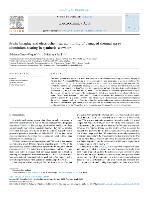Abstract
This paper presents the results of a study that combined electrochemical monitoring with in-situ imaging of Thermal Spray Aluminium (TSA) coating in synthetic seawater at room temperature in quiescent condition. The coatings were obtained by twin-wire arc spraying of 1050 aluminium alloy on S355 carbon steel substrate. TSA-coated steel samples were evaluated by analysing sequential images of the surface: (i) without defect; (ii) with defects machined before immersion (5% and 30% of exposed steel surface); (iii) with a defect machined after 35 d of immersion (10% of exposed steel surface); and (iv) after the removal of calcareous deposits formed on top of the exposed steel surface. Variations in the coating and the defect were captured and correlated with the evolution of Open Circuit Potential (OCP) during 35 days of full immersion. Determination of calcareous deposit formation time on the top of exposed steel was also carried out. The defect created before immersion impacted the cathodic reactions, resulting in a faster formation of corrosion products and calcareous deposits compared to the defect machined after exposure to synthetic seawater. The penetration time of the electrolyte in the coating and the activation of the surface are key in the protection mechanism and the kinetics of corrosion.














